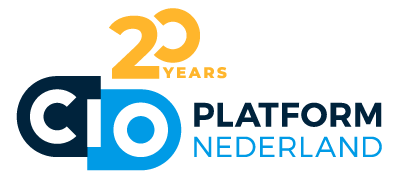Data sandbox tooling: central support, local management?
Data sandbox tooling: central support, local management?
 Wednesday 30 December 2020 15:12
Wednesday 30 December 2020 15:12 In the WhatsApp group of the CIO Platform Nederland for Data Experts we received a question about experiences with making a data sandbox available for business applications. The sandbox itself is a means to create an increasingly data-driven organisation. The below article is written for everybody not yet familiar with data sandbox, but is in the midst of a transformation to a data-driven organisation.
In the CC Transformation, including valuable sponsor Kees Jans from Wehkamp, data democratisation was put central for 2020. Both topics complement each other beautifully and give food for thought now that data tooling, data strategy and data-driven business are more topical than ever among the members of the CIO Platform Nederland. From the session we organised it became clear that the following considerations are of importance: whether you design temporarily or with a more permanent character in mind, whether genuine innovations are realised, how access to the data lake is controlled and the quality of the data (depends on your data strategy).
What data-objectives are being pursued for the different user groups?
With a small representation from the CEG data we thoroughly discussed to exchange experiences about what has to be arranged when ‘making data available’ to the entire organisation via sandbox. Quickly, the conversation is about responding to the needs of the users. Every user group demands different tooling and principles, and that requires space too. There are various data related roles that are essential to both the business side and to the IT side, and deserve attention. Make sure that the teams can work autonomously, meaning they can create and maintain dashboards while they have the freedom to work with data. What suits the culture and how data-driven are people, across all layers of the organisation? Training of management, the board of directors and supervisory directors, and also setting up a ‘’coalition of the willing’’ will ensure that progress can be made. The IT-related or central activities are providing support, training, assisting with complex questions as well as ensuring uniform tool options, and obviously that there is compliance with security and privacy requirements. Prevent dependency on one person only and create collegial support, benefits from scale and ownership.
Growing with data
In the data-governance one balances the impact of changing the data policy. How involved is one with the data, what source-systems come together, what is added or refined in the data, and how does one guarantee the continuity? Thus, in addition to the users’ wishes – what is one accustomed to, does business built themselves, what data should be available – it is about building dashboards or performing thorough analyses, realtime or batch processing, how flexible is it etc.
A data culture
Realising modifications in cloud data lakes of large ERP providers demands a lot of lobbying effort. To take people along, to be able to guarantee broad availability etc. A shift in dataculture costs a lot of energy, is tricky, but crucial. One is easily accustomed to work with a tool/report, but you create value by making cross-sections, being agile and future proof. Tech or ICT is never in the lead, but is often the catalyst. See to it that division managers join this movement to identify opportunities. The data strategy belongs tot he entire organisation, therefore harmonise your evangelism with the organisation. Make it specific and explainable; how to arrange management, who is the ‘owner’ of the data, the datamodel (incl. responsibilities) and the sourcesystem?
Data is a profession
The value of data is because of the decisions based on the large number of analyses and other data than previously available. Make a clear divide between maintenance, operation and development. Data is a profession and only works across the entire chain and all processes. The more is standardised, the more valuable the analyses. Join some important touch points in the journey that the data travels. Take a look how the tool is being used and data is generated, for all companies it appears to be an important measure for the quality. With which the term relevancy also appears. The more relevant the insights, the more people attach importance to good registrations. Vice versa also applies.
The data sandbox
With the continuous growth of standards, the chance exists to work cross-organisational in the sector. In care for example. It is essential to know where the data originates, how it is generated and in what context it is being registered. Standardise the context! A sandbox is designed to experiment, see what is being ‘created’ and who should maintain it afterwards. Continue with ‘some coincidence’, let it stick in the business and hand it over to your business. IT/BI is service-oriented, make good arrangements in advance about developing, building and maintaining. Begin with an innovation budget in the sandbox, what do you include into the business case about preparing and handing over to the business?
Future Proof
Data is a profession! It returns multiple times. How do you guard the divide between central and decentral maintenance and development. Be aware of the risks you take and where you might lose speed. Unlocking and linking data, the next step is to give business access to machine learning. Before one can successfully continue, a mature view of what the data is and can do is crucial. What do the insights mean, what answers appear and who validates those answers? With the increasing amount of data flows in your organisation and with that the amount of sources, the complexity grows as well. Take that in mind. Deal seriously with the profession, you can’t just do it on the side!
* Definition data democratization (Bernard Marr) we are using: Data democratization means that everybody has access to data and there are no gatekeepers that create a bottleneck at the gateway to the data. It requires that we accompany the access with an easy way for people to understand the data so that they can use it to expedite decision-making and uncover opportunities for an organization. The goal is to have anybody use data at any time to make decisions with no barriers to access or understanding.
